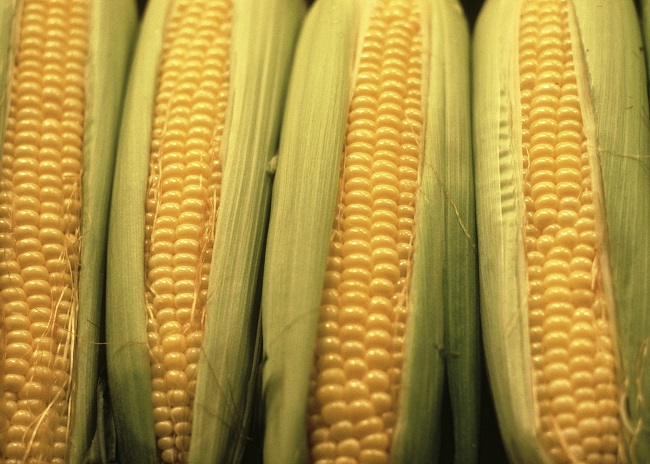
Sweet corn is a summer favorite for everyone. We all have fond memories of eating corn on the cob at summer picnics and grill-outs; it is an essential summer side dish. Many gardeners regard sweet corn as a garden staple that they cultivate every year. But homegrown corn may not be the best crop for all of us.
The first and most important consideration in growing sweet corn is space. If you are lacking for planting area, or if you prefer to garden in containers, then sweet corn is probably not the crop for you. Corn is pollinated by wind, meaning that it is essential to plant it in blocks at least four rows wide. If corn is planted in one long, single row, you will get a disappointingly low yield of edible ears.
When planting corn, be sure to work a good fertilizer that is high in nitrogen into the soil. Throughout the growing period, add additional side dressings of an all purpose 10-10-10 fertilizer, as needed. Corn should be watered regularly. During the three- or four-week period from pollination to harvest, the plants should receive at least one inch of water per week. Setting up a drip irrigation line may aid in this process and will also ensure that you do not disturb the plants too much during the pollination process.
Corn is a vegetable that requires a long, hot growing season. Corn plants are easily killed by frost, and prolonged temperatures below 40 degrees will seriously injure the crop. For best results, corn requires a growing season of 75 to 90 days of temperatures between 70 and 80 degrees. Of course, very few climates will meet this ideal, but it is usually possible to successfully grow corn in all regions ranging from Mexico to Canada, provided that the seeds are not planted too early in the year.
To get a head start on your corn, seeds can be planted indoors as early as a couple weeks before the last frost date. Once the seedlings are at least two inches tall, you can plant them outdoors, being careful not to disturb the roots. Corn seeds can also be sowed directly into the garden. Whether sowing indoors or out, you can help the seeds germinate more quickly by soaking them overnight in room temperature water before planting.
It is important to harvest sweet corn immediately before cooking it. Sweet corn has a high sugar content, which begins to convert to starch rapidly after the ears are harvested. Sweet corn purchased in the grocery store, which is what many people are accustomed to eating, has a low sugar content relative to freshly picked ears. This is one of the reasons why homegrown sweet corn is an extra special treat.
In short, the most important keys for growing sweet corn are plenty of space and a long and warm growing season. There are many varieties to choose from, and modern hybrids will give you greater disease resistance and higher yields. If you enjoy gardening and have never grown sweet corn before, why not give it a try? You may decide that this is one vegetable that’s worth growing year after year.
Ellen Bell works for a retail website that offers many home and garden products.
Related Articles & Free Email Newsletter
7 Reasons for Companion Planting
Planning and Designing a Productive Vegetable Garden




Comment here